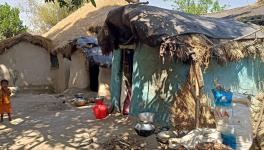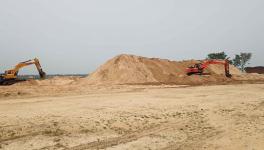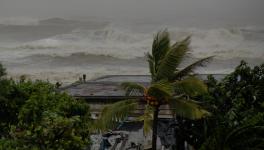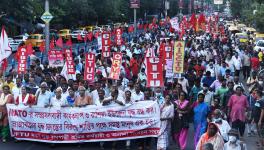West Bengal: Is DVC’s Mejia Thermal Plant Turning Nearby Villages Into Death Valleys?
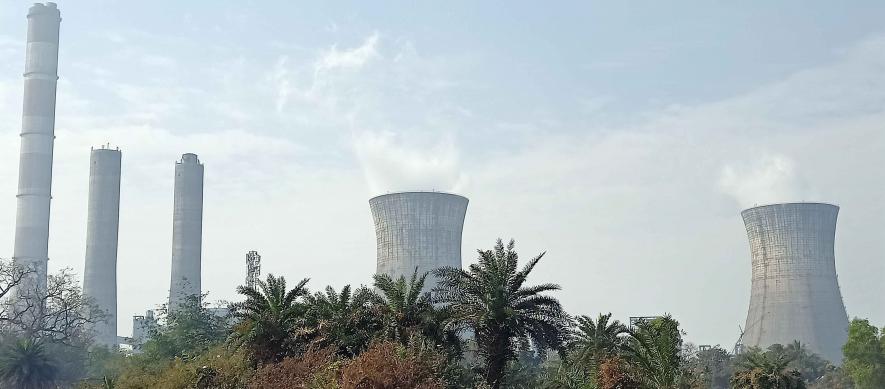
MTPS Thermal plant
Durgapur: Death looms in the air here, the eyes can see nothing but ash, the clothes turn black due to the smoke-filled atmosphere and breathing is laboured – this the state in which people are living near Durgapur Valley Corporation or DVC’s Mejia thermal power station.
It is this soke and pollution that ended the life of Kartic Nayek’s wife, Latika. Nayek stares at the thermal plant with bleary eyes, malnutrition clearly written all over his body. He tries to take rapid breaths, but where is the fresh air? Thick toxic ashes from DVC’s Mejia thermal power station (MTPS) have had a dire effect on his lungs.
Not only Nayek, in the past five years, hundreds of people have died due to ash and coal smoke pollution in the adjoining area of the thermal plant, say local residents. Several people of these area are suffering from cancer, tuberculosis, serious skin disease, and breathlessness. Several people of Latiaboni, Radhakrishnapur, Bankdoho, Jamgari, Pheguyasol, Nityanadapur villages near MTPS have died due to such diseases, local residents say. The death toll is particularly high in Latiaboni.
Visit Latiaboni village any time, and you can see black smoke and flying ash covering the sky, billowing out from the power plant. Even the slightest breeze makes the situation worse. After power generation, this ash poisons the pond water, too.
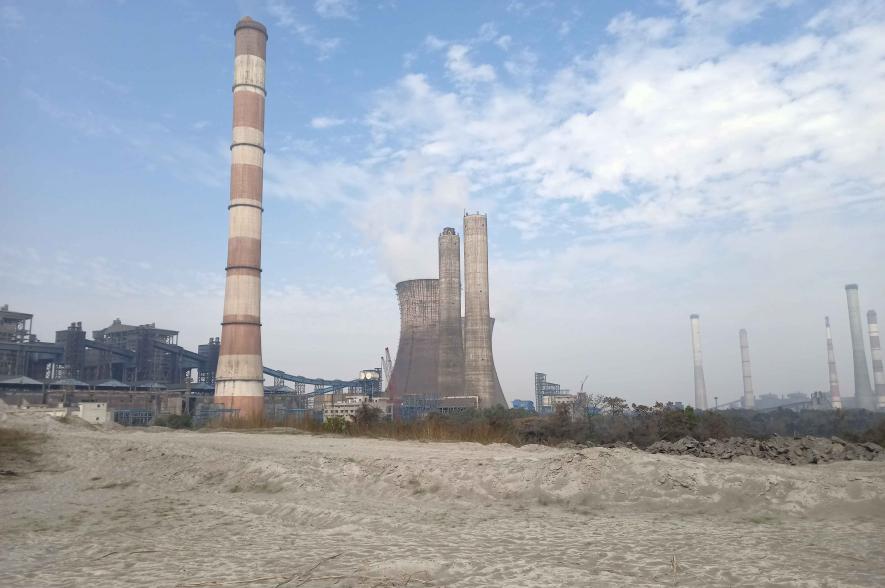
Ash pond of Mejia thermal power station which is overflowing.
“We do not want this wind, as it blows toxic ash. Ash on one side, and coal dust from the other, flies in the air continuously. Our lives are in danger, we want to live, we don’t want to die prematurely’’, Madhu Maji, a resident of Latiaboni, told this writer.
In 1986, on March 20, a notification was issued for the construction of the Mejia power station of DVC at Durlavpur of Gangajolghati police station under Bankura district in Bengal. This location is about 200 kilometres from West Bengal’s capital, Kolkata.
At that time, the then Left Front government, the panchayat and local people had cooperated in the process of acquiring land for the plant. At total of 2,250 acre was acquired. Out of this, 800 acre was forest land and rest included human settlements and agricultural land. The agricultural land and many residential houses in Latiaboni, Khatiala, Machhbandh, Ghatakgram, Amdanga, Durlavpur, Parrar gram have come within the power plant. The villages Ghatakgram and Amdanga no longer exist today.
After trial in 1995, the Mejia thermal power station started generating electricity in 1996. At present, it generates 1,800 megawatts in eight units. The MTPS is the largest thermal power plant in term of generating capacity in West Bengal, as well as among other DVC power plants. It supplies power to West Bengal state Electricity distribution company, neighbouring states and also Bangladesh.
But the question is whether the people living in areas adjoining MTPS paying a heavy price for all this. In the midst of so many bright lights, their lives are getting darker by the day. A high-ranking official of MTPTS explained the process to this writer: “When electricity is generated by burning coal, chemical oil is also supplied to the furnaces. After generating electricity, the coal ash with exhaust water is piped out, which is a kind of poisonous ash- water”.
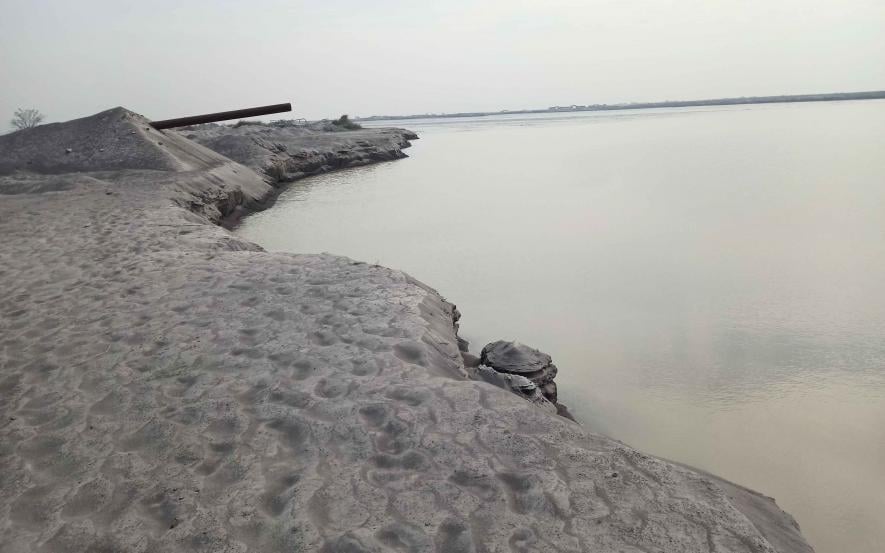
Ash pond of Mejia thermal power station which is overflowing.
The harmful emission from the plant has not only polluted the ground water, but also caused serious health hazards. It has destroyed agricultural land in several villages, including Jamgari, Radhakrishnapur, Nityanandapur, Bankdoho, Pheguyasol.
A few years ago, the affected farmers were given one-time relief money by DVC, mainly due to a people’s movement and the initiative of Basudeb Acharia, former member of Parliament from CPI(M) and leader of the Centre of Indian Trade Union (CITU).
But the MTPS authority is now not giving the compensation amount, which was supposed to be paid to the farmers every year, Sadhan Ghose, Aditya Garai, farmers of Pheguyasol village and Manik Mondal and Sukhomoy Akuli, residents of Jamgari, told this writer.
The Trinamool Congress government is silent on this issue. The irrigation pond of Jamgari village, which was built by the state government, is filled with ash. There is not a single drop of water. What the people are questioning is: Does the state government have nothing to do in this matter or is there some mysterious reason for this silence?
According to a source in MTPS, over 7.000 tonnes of fly ash is dumped in the two ponds every day. The ponds have been constructed by the MTPS authorities in an area of 8km. But the accumulated ash has been overflowing. As a result, even if a little wind blows, this ash flies over a wide area.
Since a few years, the MTPS authorities have been forced to remove the ashes due to a mass movement in the area, said Achinta Das, a CITU leader in the MTPS union.
“Now 300 dumpers take ash from the two ponds every day. It is sold to cement factories, brick-making industry and for road building work. But still a lot of ash remains here. We have been repeatedly demanding more ash ponds and that the piped out ash must be completely filtered scientifically,” Das said.
According to MTPS sources, two years ago, the pollution control board inspected the plant and found that none of norms to control pollution were being followed. It had recommended strong measures to keep the environment clean. After the recommendation, MTPS installed an ESP (electrostatic precipitator) machine, but after a few months, this machine was removed,” he said.
When this reporter entered Lotiaboni village, a stone’s throw distance from the MTPS project area, the whole village looked like a deserted land. The roads bore an empty look with most houses locked.
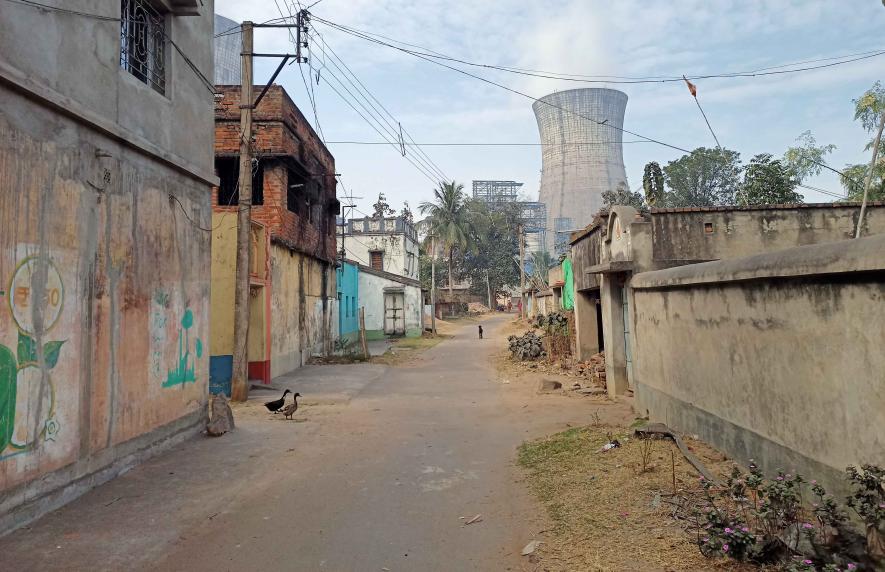
Deserted village of Lotiaboni, adjoining area of MTPS
“Over a hundred families have already migrated from the village,” said Swapan Ray and his wife Annapurna. Sailen, Jiten, Shibaprasad Mondal, who have decided to leave the village, said: “We cannot make our children live and die here as this village has been turned into a virtual death trap. It is impossible to survive here as the fly ash and others toxic gases have made out lives hellish”.
Rabi Mondal, an elderly resident of Lotiaboni, said: “We have been suffering from fever, headache, lung disease, and skin diseases are scarring us.” He said a doctor visits them once a week from MTPS, but no medicines are available. There is no piped water. Villagers claim that people have stopped marrying their daughters in their village. “No one wants their daughters to live and die in this environment,” said Debasis Mondal.
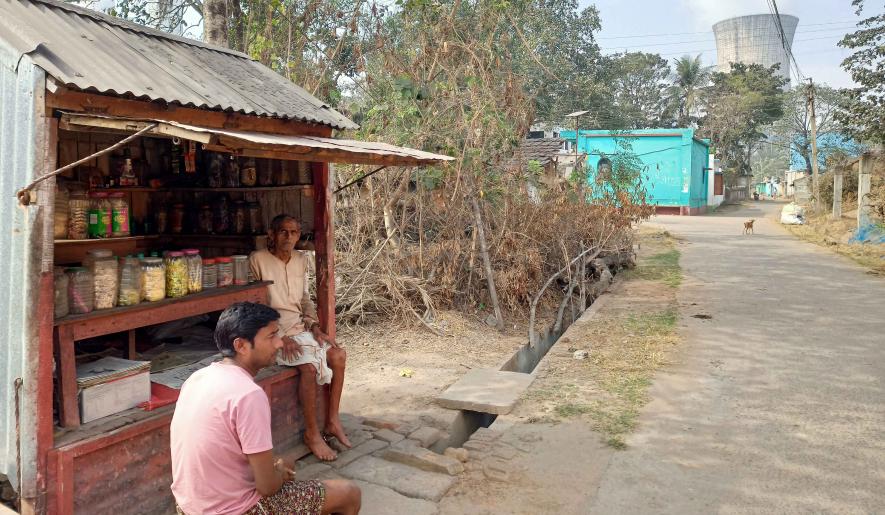
Rabilochon Mondal and debasis Mondal are sitting at deserted village Lotiyaboni
In this situation, those who have no place to go and have no financial ability, are forced to live in this village.
This reporter observed an old woman, Pramila Mondal, who suffers from breathlessness and coughs, had itchy skin that was bleeding. Recently, Monmotho Lohar and Rabi Lohar died of lung disease without treatment, the villager said, creating further panic throughout the village.
“‘We want to live. We are not against power plant. We want DVC to rehabilitate us as early as possible”, said several villagers of Lotiyaboni. But the MTPC authorities is silent on this matter. An MTPS officer, on condition of anonymity, said there was no plan for rehabilitation.
So, now will Lotiaboni village become a death valley, as the state’s largest power plant, MTPS, forges ahead?
The writer covers the Bankura region for Ganashakti newspaper in West Bengal.
Get the latest reports & analysis with people's perspective on Protests, movements & deep analytical videos, discussions of the current affairs in your Telegram app. Subscribe to NewsClick's Telegram channel & get Real-Time updates on stories, as they get published on our website.









